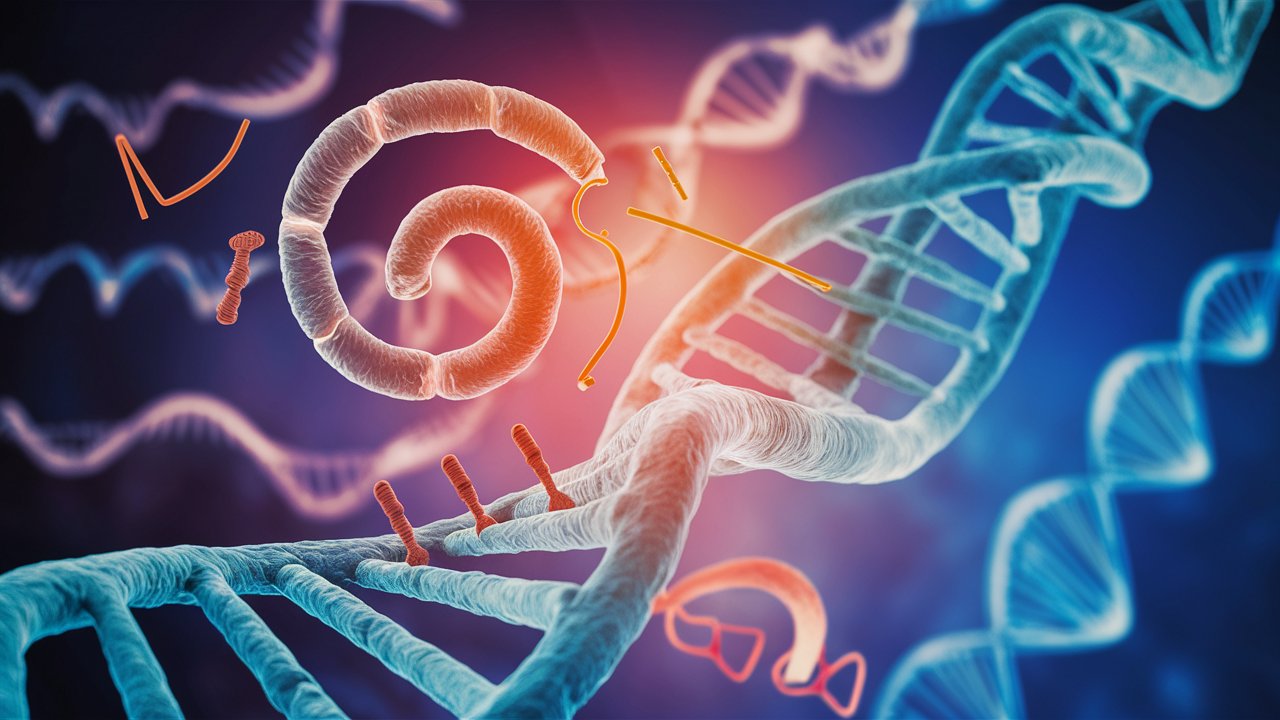
Helicase activity is a fascinating process that plays a crucial role in DNA replication and repair. These enzymes are like molecular motors, unwinding the double helix of DNA to allow various cellular processes to occur. Without helicases, cells couldn't replicate their DNA or repair damage, leading to genetic instability. Imagine trying to read a book with the pages stuck together; helicases are the tools that separate those pages, making the information accessible. Understanding helicase activity helps scientists develop treatments for genetic disorders and cancer. Let's dive into 20 intriguing facts about these essential enzymes and their incredible functions.
What is Helicase?
Helicase is an essential enzyme in the world of molecular biology. It plays a crucial role in DNA replication by unwinding the double helix structure of DNA, allowing other enzymes to access the genetic information. Let's dive into some fascinating facts about helicase activity.
The Role of Helicase in DNA Replication
Understanding helicase's function in DNA replication is key to grasping its importance. Here are some intriguing details:
-
Helicase unwinds the DNA double helix: This enzyme breaks the hydrogen bonds between the two strands of DNA, creating single strands that can be copied.
-
Energy consumption: Helicase requires energy to function. It uses ATP (adenosine triphosphate) to power the unwinding process.
-
Multiple types of helicase: There are several types of helicase, each with a specific role in DNA replication, repair, and recombination.
-
Directionality: Helicases can move in different directions along the DNA strand. Some move from 3' to 5', while others move from 5' to 3'.
Helicase Structure and Mechanism
The structure and mechanism of helicase are as fascinating as its function. Here are some key points:
-
Hexameric structure: Many helicases form hexameric (six-part) structures, which help them encircle the DNA strand.
-
Motor proteins: Helicases are considered motor proteins because they convert chemical energy into mechanical work.
-
Processivity: This term refers to the ability of helicase to continuously unwind DNA without dissociating from the strand.
-
Helicase loading: Before unwinding can begin, helicase must be loaded onto the DNA strand by other proteins.
Helicase in Human Health
Helicase activity is not just a molecular curiosity; it has significant implications for human health. Here are some facts:
-
Genetic disorders: Mutations in helicase genes can lead to genetic disorders such as Werner syndrome and Bloom syndrome.
-
Cancer connection: Abnormal helicase activity has been linked to various cancers, making it a target for cancer research.
-
Antiviral targets: Some viruses rely on helicase for replication, making helicase inhibitors potential antiviral drugs.
-
Aging: Defects in helicase function can accelerate aging processes due to impaired DNA repair mechanisms.
Research and Technological Advances
Research on helicase continues to evolve, leading to new discoveries and technological advancements. Here are some highlights:
-
Cryo-electron microscopy: This advanced imaging technique has provided detailed views of helicase structures.
-
Single-molecule studies: Researchers use single-molecule techniques to observe helicase activity in real-time.
-
Synthetic helicases: Scientists are developing synthetic helicases to better understand their function and potential applications.
-
Drug development: Ongoing research aims to develop drugs that can modulate helicase activity for therapeutic purposes.
Fun and Lesser-Known Facts
Helicase may seem like a serious topic, but it has some fun and lesser-known aspects too:
-
Helicase nickname: Sometimes called the "unzipper" of DNA due to its unwinding function.
-
Helicase in pop culture: The enzyme has even made its way into pop culture, with references in TV shows and songs.
-
Helicase speed: Some helicases can unwind DNA at a rate of up to 1,000 base pairs per second.
-
Helicase diversity: Found in all domains of life, from bacteria to humans, highlighting its fundamental role in biology.
Helicase: The Unsung Hero of DNA Replication
Helicase plays a crucial role in DNA replication. This enzyme unwinds the DNA double helix, allowing other enzymes to copy the genetic information. Without helicase, cells couldn't divide and life as we know it wouldn't exist. It's fascinating how such a small molecule can have such a big impact on life.
Understanding helicase activity helps scientists develop treatments for genetic disorders and cancer. By studying how helicase works, researchers can find ways to fix or inhibit malfunctioning enzymes. This could lead to breakthroughs in medicine and improve countless lives.
So, next time you think about DNA, remember the unsung hero, helicase. It's a tiny but mighty enzyme that keeps life going. From unwinding DNA to aiding in medical research, helicase proves that sometimes, the smallest things make the biggest difference.
Was this page helpful?
Our commitment to delivering trustworthy and engaging content is at the heart of what we do. Each fact on our site is contributed by real users like you, bringing a wealth of diverse insights and information. To ensure the highest standards of accuracy and reliability, our dedicated editors meticulously review each submission. This process guarantees that the facts we share are not only fascinating but also credible. Trust in our commitment to quality and authenticity as you explore and learn with us.


